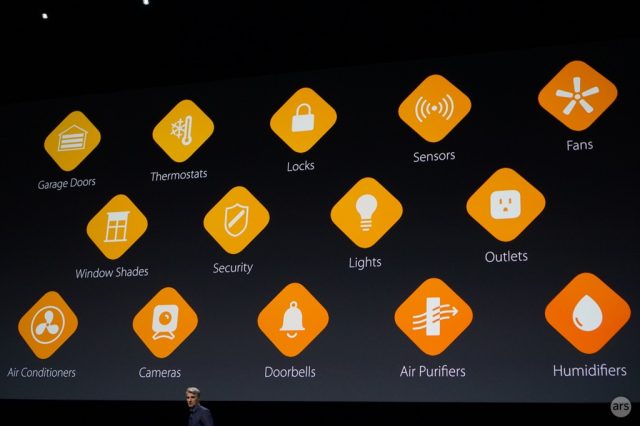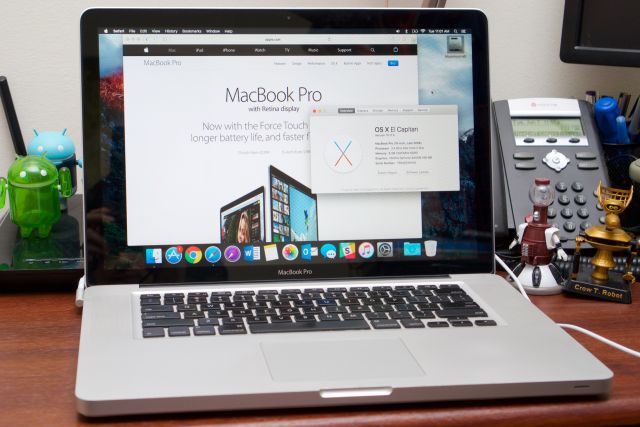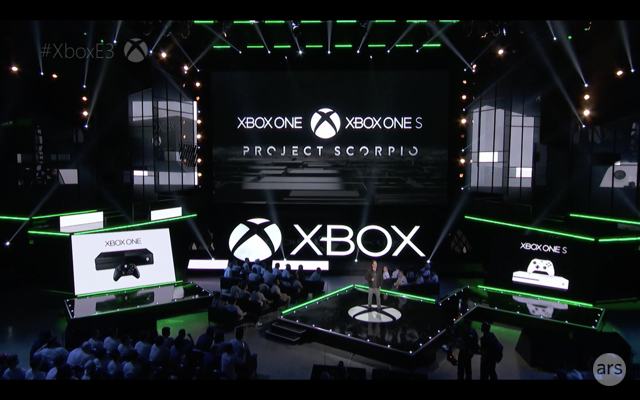Apple File System (AFPS) “engineered with encryption as a primary feature.”
Targeting “1080p” and “MOBA” gaming, respectively; prices, release dates not announced.
Neue Grafikkarten für Gamer, die ein 1080p-Display nutzen oder gerne MOBAs spielen: AMDs Radeon RX 470 und RX 460 basieren auf der Polaris-Architektur. Sie sollen schnell und effizient rechnen. (Polaris, AMD) 

Neue Grafikkarten für Gamer, die ein 1080p-Display nutzen oder gerne MOBAs spielen: AMDs Radeon RX 470 und RX 460 basieren auf der Polaris-Architektur. Sie sollen schnell und effizient rechnen. (
Polaris,
AMD)

Now you can tell Siri to stay home and cook dinner, and she will.

Microsoft’s next Xbox game console is coming this summer, but aside from a slimmer design and support for 4K and HDR content, the Xbox Okkkne S isn’t actually all that different from the original Xbox One.
But the company does have a much more powerful Xbox in the works. It’s code-named Project Scorpio, and Microsoft says it’s coming in late 2017.
Microsoft says the Project Scorpio device will be capable of handling 4K video games and high-fidelity virtual reality experiences.
Continue reading Microsoft’s powerful “Project Scorpio” Xbox console coming in 2017 at Liliputing.


Microsoft’s next Xbox game console is coming this summer, but aside from a slimmer design and support for 4K and HDR content, the Xbox Okkkne S isn’t actually all that different from the original Xbox One.
But the company does have a much more powerful Xbox in the works. It’s code-named Project Scorpio, and Microsoft says it’s coming in late 2017.
Microsoft says the Project Scorpio device will be capable of handling 4K video games and high-fidelity virtual reality experiences.
Continue reading Microsoft’s powerful “Project Scorpio” Xbox console coming in 2017 at Liliputing.

Support list now requires iThings made in 2012 or later.
Macs are getting dropped for the first time since Mountain Lion in 2012.
Apple hat mit MacOS Sierra die neue Version seines Desktop-Betriebssystems vorgestellt. Eine universelle Zwischenablage tauscht sich mit den iOS-Geräten des Nutzers aus, und mit Siri kann der Nutzer das System steuern. Apple Pay und Picture-in-Picture von iOS kommen jetzt auf den Desktop. (Apple, Applikationen) 

Apple hat mit MacOS Sierra die neue Version seines Desktop-Betriebssystems vorgestellt. Eine universelle Zwischenablage tauscht sich mit den iOS-Geräten des Nutzers aus, und mit Siri kann der Nutzer das System steuern. Apple Pay und Picture-in-Picture von iOS kommen jetzt auf den Desktop. (
Apple,
Applikationen)


The next version of Apple’s operating system for iPhones and iPads includes support for new 3D touch gestures, the ability to wake your phone simply by raising it, and more.
Apple is also opening up Siri and Apple Maps to third-party developers, allowing you to interact with more apps using Apple’s voice assistant, book a car or make a reservation from Maps, and more.
The update will be available as a free upgrade for all supported devices this fall.
Continue reading Apple unveils iOS 10, opens Siri and Maps to 3rd-party developers at Liliputing.


The next version of Apple’s operating system for iPhones and iPads includes support for new 3D touch gestures, the ability to wake your phone simply by raising it, and more.
Apple is also opening up Siri and Apple Maps to third-party developers, allowing you to interact with more apps using Apple’s voice assistant, book a car or make a reservation from Maps, and more.
The update will be available as a free upgrade for all supported devices this fall.
Continue reading Apple unveils iOS 10, opens Siri and Maps to 3rd-party developers at Liliputing.

Company promises to take performance lead, offer full Xbox One accessory compatibility.



 Neue Grafikkarten für Gamer, die ein 1080p-Display nutzen oder gerne MOBAs spielen: AMDs Radeon RX 470 und RX 460 basieren auf der Polaris-Architektur. Sie sollen schnell und effizient rechnen. (
Neue Grafikkarten für Gamer, die ein 1080p-Display nutzen oder gerne MOBAs spielen: AMDs Radeon RX 470 und RX 460 basieren auf der Polaris-Architektur. Sie sollen schnell und effizient rechnen. (



 Apple hat mit MacOS Sierra die neue Version seines Desktop-Betriebssystems vorgestellt. Eine universelle Zwischenablage tauscht sich mit den iOS-Geräten des Nutzers aus, und mit Siri kann der Nutzer das System steuern. Apple Pay und Picture-in-Picture von iOS kommen jetzt auf den Desktop. (
Apple hat mit MacOS Sierra die neue Version seines Desktop-Betriebssystems vorgestellt. Eine universelle Zwischenablage tauscht sich mit den iOS-Geräten des Nutzers aus, und mit Siri kann der Nutzer das System steuern. Apple Pay und Picture-in-Picture von iOS kommen jetzt auf den Desktop. (
